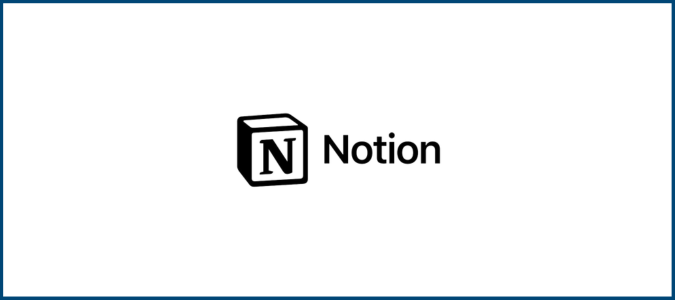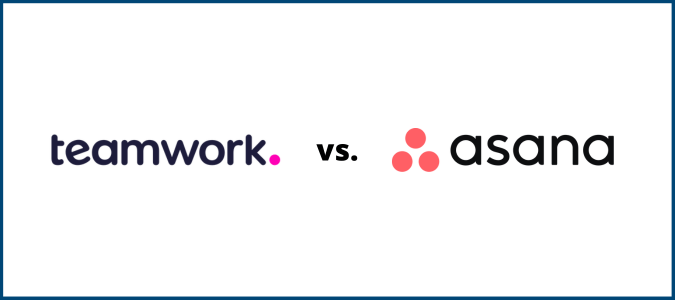Requirements management can look easy and effortless on the surface.
But looks are deceiving.
It’s when you get started you realize how much work goes into managing a project.
What?
You were expecting us to tell you anything worth having comes without effort. Not a chance, we start every post with honesty and clarity.
That’s what you deserve.
And that’s why you’re here isn’t it? You’re here for the real deal. And to figure out how to get real results, right?
The whole process of managing a project where you have to painstakingly document every decision, exception, assumption, and specification should be the easier part.
Notice we said easier, not effortless.
The effort, however, is worth it. And this guide will help to simplify the process.
You can prioritize requirements.
Then identify what your product needs to do and how it should look.
And then successfully describe its functionality and value.
What you get as a result is a much smoother project process.
And that my friend is exactly what you’ll learn how to do.
Why Is Requirements Management So Important?
Let’s get straight to the point, requirements management is vital for two reasons:
- First, it acts as a point of reference and documents the evolution of a project, including its implementation and other moving parts.
- Second, it serves as a blueprint for the client, giving them a clearer picture of the project. Everybody will have a better idea about the why, who, what, how, and when of the plan.
What’s more, requirements management also lets everyone know what not to expect, which can help handle the dreaded client imagination. We know, we fear it, too!
Is your team unsure of how to prioritize requirements? Have you been frustrated with the lack of progress in meetings and discussions about what needs to be done next for your projects?
Ubisoft, a leading game developer (Assassins Creed creators), decided to incorporate the requirement management tool Helix RM to store source code and digital assets.
The company wanted to improve the sharing of tools between development teams and boost productivity with new tools and processes—something they achieved with ease because of Helix.
In fact, Nicholas Beaufils, the technical architect at Ubisoft, credits their success to the software’s speed, reliability, and scalability, and now has more than 1000 users depending on it.
Here’s a breakdown of what Ubisoft was able to achieve by using a requirements management tool:
- Keeping track of even the smallest changes submitted every day.
- Grouping code changes in logical units to allow programmers to select what they want to work with.
- Easily switch between separate tasks with minimal descriptions.
- Sharing the same code across different target game platforms.
- Speeding up development by improving distributed development.
Ubisoft is always developing several in-house tools, which is why it needed a flexible API to interact with source control. Keeping track of their requirements helped them boost their overall productivity and ensure a smoother operation.
How to Improve Requirements Management Today
Requirements naturally change and evolve during the development process.
That’s why teams should have the flexibility to access, collaborate, update, and test every requirement right through completion.
The main question is, how do you improve the whole process?
Below, we’ve compiled a list of the five best ways to solve and improve all your requirements management issues.
#1 Gather Requirements More Effectively
The very first thing on your to-do list should be to list your requirements. This can help you break down communication between you, the client, the stakeholder, the team members, and the customer.
Beware: It’s a whole process—it’s easy but elaborate.
Here’s how you can gather requirements more effectively:
Requirements Elicitation
Start the planning process by interviewing and investigating the project needs and requirements of others. This could only be anything—a rundown of your stakeholder list, sales associates and their needs, the customer support team, or even customers.
This is known as requirements elicitation, or the first step to gathering project requirements.
Top Tip: Use a requirement gathering template. It‘ll help you get a better understanding of where your project stands. There are many free ones available on the internet, so no extra effort is needed.
Requirements Documentation and Understanding
This one is pretty simple: Write down everything and document all product specifications. The more details you can get, the better. This will make it easier for the other team members to understand the project scope.
Practice Open and Frequent Communication
Your requirements documentation should translate well across all departments. In other words, they should be able to understand the project scope and requirements clearly even when they don’t attend any meetings.
Make sure you add updated notes from internal and stakeholder meetings to avoid problems down the line.
Figure Out Your Project Assumptions
Balancing project requirements becomes easier when you understand your assumptions within your project.
Assumptions generally involve three things: time, budget, and scope, so this isn’t something you would want to miss out on. Things like factoring in holidays and sick leave, considering whether important tools are operational or in need of repair, stakeholder feedback is crucial for a project’s success.
Monitor and Track Requirements
Try to monitor and track your requirements across all the levels. This will help you keep your project on track from a time and budgetary standpoint, as well as mitigate any risk throughout every project phase.
#2 Involve the Right People
Sounds pretty obvious, right? But not mentioning this would’ve been wrong.
The root cause of unsuccessful projects or overly challenging projects is having the wrong or missing stakeholders.
Everyone does their best to involve the right people, yes.
But identifying, communicating, and analyzing the interests of stakeholders can be very tricky.
Getting the right people involved is critical to the smooth running of a project.
This also comes down to resource management and putting the right people in place to ensure the project gets done.
Here’s a list of questions that can help you identify the right stakeholders for your project:
- Who are the subject matter experts?
- Who do you think are the end-users of the product, service, or result of the project?
- Who is going to pay for the work on the project?
- Who understands the current environment, architecture, and infrastructure related to the project?
- Who do you think the process improvement or automation will impact the most?
- Who else can be involved in the project?
And that’s it!
Figuring out the answers to these questions can help you target the right stakeholders—ones who make it more likely for your project to be successful.
#3 Prioritize Requirements Traceability and Change Management

Requirements traceability is a must if you want to keep every individual in the loop about a project. It’s an excellent way to organize, document, and track all your requirements from the initial idea to testing.
Think of the whole process as connecting all of the dots for identifying relationships between items within a project.
Additionally, requirements traceability helps identify the ripple effect of any change you make, giving you better clarity when anticipating problems and enforcing quality. You can also track every requirement back to its original business objective before and after a project.
Traceability and change management also helps ensure the deliverable ticks off every vital stakeholder requirement while simultaneously helping team members stay connected and interdependencies.
The direct benefit? Better development schedule and budget with minimum delays and cost overruns.
#4 Get Project Management or Requirements Management Automation Tools
We have tons of sophisticated project management software applications like Monday.com and Jira to keep everyone on the same page about the project or a release and automate monotonous tasks. Even requirement management tools help define the overall scope of a project better.
Let’s take a look at some of the best project management tools that can take your productivity to another level.
Jira Software

This is hands down the best tool for task and bug tracking, making it the go-to for custom software development companies.
You can customize the ticket structure, workflows, and notifications based on the project needs. You and your clients can open the Jira board with the actual statuses of the tickets for review. The software also comes with several useful plugins that can simplify integration with different external tools.
Monday.com

Monday’s fully customizable and user-friendly board makes it a rich collaborative space for project planning, management, and process control.
This tool is more suited for non-tech departments like your sales, marketing, and customer support teams. You can see the roadmap, discuss features, share documents, and strategize your marketing campaigns through this tool.
LucidChart

LucidChart is the perfect tool for creating charts, as the name suggests. Everyone from product owners to business analysts to project managers uses this tool to better design charts that illustrate the functionality, data flow, and mobile and web application architecture.
Companies that create Unified Modelling Language (UML) charts like a flowchart, sequence diagram, use case diagram, and activity diagram will especially love LucidChart. You can also integrate it with Confluence, which is an excellent tool for document management.
We also recommend Zapier and IFTTT that make different tools work together harmoniously. These platforms can come in handy when your tools lack an open API or integration facility.
Most software tools offer useful integration to make document updates and status changes faster. They are also designed to detect any issues with the deployment process or flag when the deployment is over.
As a result, you can save time on meetings without losing effectiveness.
#5 Enforce Accountability by Reviewing Project Milestones
You must review the project with stakeholders at every milestone in addition to at the very end. Go over all interview questions and your project closure checklist together to get more insights and gather final information during the post-mortem review.
Try to come up with additional questions to gain new information you feel could improve the end result, such as:
- Do you think the project process went smoothly?
- What aspects could be better during the project process?
- Did you learn anything from this project process?
- What would you recommend we include in projects in the future?
This is also where requirements traceability comes into the picture.
Looking back at your requirements and seeing all the changes it went through and how it was completed can help your team gauge whether the solution is genuine. You can find out about any related non-functional requirements, too.
In the end, you’ll be able to decide whether all requirements have been met effectively and, if not, where you could have improved.
4 Best Practices for Requirements Management
Here, let’s discuss how you can manage requirements properly despite changes and without losing your focus on delivering the desired result.
Let’s take a quick look.
#1 Gather Requirements from Multiple Sources
Requirements collection is the first step when launching a project, which is why if you get this wrong, things can go badly, very fast.
Make sure to include all relevant sources like new and seasoned users, business analysis, managers, and other stakeholders. Talk to operational users to get key insights into the functionality of requirements for your system performance and user interface.
Tips to Get Requirements From Multiple Users:
- Learn more about your users, like why they use the product, their pain points, their workflow and task sequencing tendencies, and so on.
- Hold brainstorming sessions with people who communicate with users.
- Look for explicit and not-so-explicit requirements in your users’ informal narratives.
- Ask users targeted questions and carefully analyze user environment.
#2 Organize and Prioritize Requirements
Anyone tasked with categorizing a long list of requirements will find it intimidating. But it’s really the best way to document requirement attributes and keep everything up-to-date for traceability during the testing and verification phases. So don’t run away from it!
Once you have a clear structure of requirements, you and your team can identify what is missing, contradicting, or duplicated better. Even determining action tasks and test cases become possible.
Tips to Prioritize Requirements:
- Ask stakeholders to assign a priority to every collected requirement
- Hold meetings with stakeholders to define priorities only on the project
- Organize requirements hierarchically into a tree-view structure
#3 Educate Your Team in Change Impact Analysis
Change impact analysis is an excellent assessment to give your team a better understanding of a proposed change’s implications. This, in turn, will help them make better business decisions about change proposals.
For instance, when you include too many functionalities in the product, it may reduce its performance to an unacceptable level.
The analysis lets find components that should be rejected, added, or modified. You can also identify documents, files, and models you’ll have to be modified if you do incorporate a change request, as well as define the tasks to implement the change.
#4 Train Your Team on Requirements Management
What do you get when you ask someone who had never entered the kitchen to cook an elaborate seven-course meal? Answer: Disaster.
Similarly, you can’t ask team members who have never written or managed requirements to follow a complex requirements process and expect it to magically work out. You must train your team in requirements management instead of asking them to learn it on their own.
Trust us, it’ll give you better results AND save lots of time!
Tips to Train Your Employees in Requirements Management
- Plan your training process using your real requirements and deliverables to make it more real and practically applicable.
- Rope in a mentor who has “been there, done that“ for expert guidance.
- Skip genetic classes around requirements definition and management.
- Don’t dismiss the thought of hiring an outside consultant if you want customized training.
- Give your analysts time to practice what they learned and avoid putting them on a crucial project right away.















